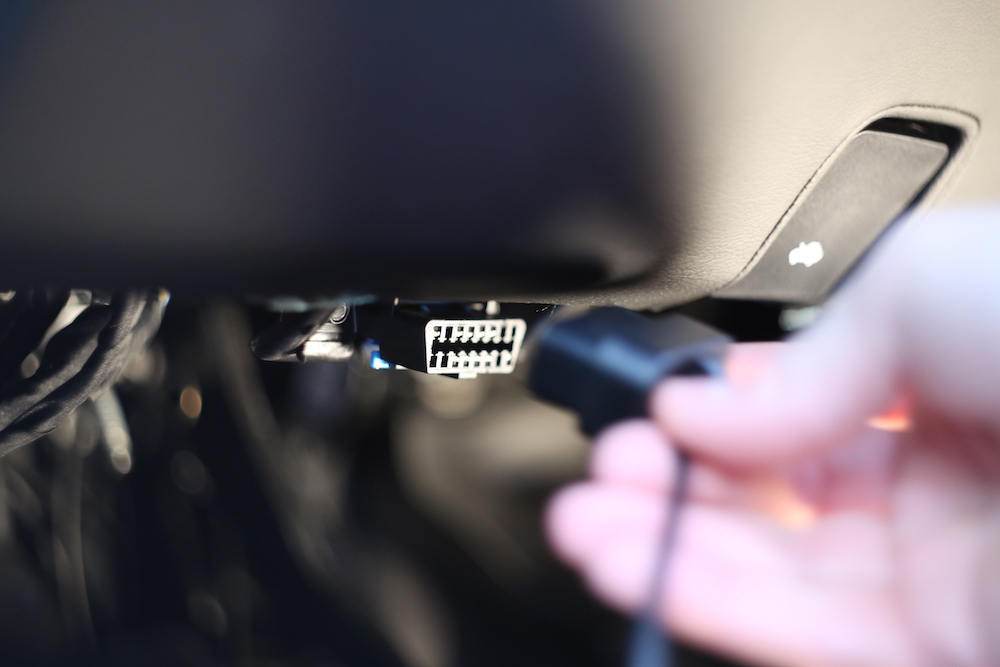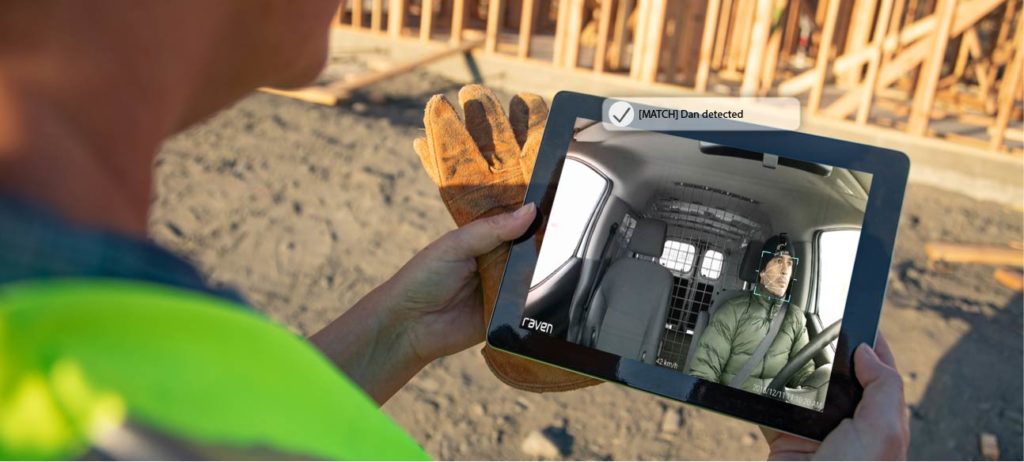What is telematics?
Telematics is a broad, somewhat daunting term that encapsulates the transmission of information through the use of technology over long distances. This term is most common in fleet management solutions. For fleets, a hardware device installed in the vehicle accumulates driving behavior and vehicle data points relaying them back to a software application via a phone or computer. This information ranges from speed to accident detection.
How does it work?
Hardware

The hardware component of a telematics system can either be hardwired or plugged into the vehicle’s computer via the OBDII port on light-duty vehicles or J1939 for heavy-duty vehicles. The wired connection is required to pull several data points directly from the vehicle, such as speed, fuel level, and fault codes.
In addition to these data points, telematics devices also include many internal sensors. Depending on the device, these sensors may vary. Raven Connected includes a GPS module, accelerometer, gyroscope, magnetometer, air pressure, and temperature sensors.
Transfer of information
The transfer of data over long distances requires a cellular network connection. This connection requires a monthly or annual service plan, similar to a mobile device to function.
Software
Data points collected via the vehicle’s computer and sensor data from the telematics data are deciphered for meaningful information and passed along to software applications. These can be a mobile, desktop, or web applications. From live location and event tracking to populating historical data, this information gets stored in these apps for use by owners, managers, and supervisors.
What are the benefits of using telematics?
The benefits of using a telematics system are vast. From cost savings to smoother workflows, every business operating multiple vehicles should be implementing some form of a telematics solution. Contrary to what many believe, telematics solutions are not reserved for large fleet operations and nor should they be. Many options on the market range in best use for different operation sizes. From two or more vehicles to thousands of vehicles, there is a solution that currently exists for every business.
Improved payroll accuracy
Telematic technologies keep track of time spent on the road in both real-time and saved into reports. This allows managers to reference logs on their software against time cards submitted by employees. If there are discrepancies, whether intentional or by human error, your telematics solution will help you catch them.
In some cases, our clients have reported lost time cards, half-empty time cards, and in some instances, fraudulent cards whereby our reporting framework has helped rectify inaccuracies. You can be assured that records from your software are accurate and complete.
Decreased costs
In addition to potential savings from payroll improvements, additional costs can also be saved through the use of a telematics system. Monitoring the use of fuel and idling can also dramatically reduce costs. Idling alerts can let you know when a vehicle has been doing so for longer than a set threshold. If this is a common practice from a driver, steps can be taken to reduce or even eliminate frequency.
Improved driver safety
Through the use of different driver behavior alerts and reports, dangerous driving can be detected and improved. Coach drivers and keep an eye on driver performance over time to see if poor drivers need to be pulled from the road. With additional features in some devices like video, even greater insight as to what was going on can be known. In addition to causing danger to others, one collision and insurance premiums will take a hike, not to mention the potential implications to your business’ reputation.
Elevated performance
Real-time tracking can help drivers avoid traffic and can reroute other drivers if someone hits a snag. With Raven Connected, communication goes two ways with the dispatch messaging feature. Let drivers know critical information sent directly to Raven screens.
If you’re looking for specific telematics applications for your business vertical, take a look at our industry highlights section.
What do telematics systems cost?
The cost of a telematics solution varies dramatically. There are typically two costs associated with these systems, the hardware cost, and then the monthly revenue related to the service plan.
We’ve taken a look at different options with hardware ranging from less than $100 up to thousands. Monthly service plans range just as significantly. Additionally, often the number and type of vehicles in your fleet will also vary the amount that you pay.
Some solutions will lock you into a long term contract, so be cautious and do your due diligence beforehand to ensure you select the product that’s right for your business.
As for our product, we charge either $328 or $384 per unit, depending on the desired level of internal memory. Our monthly service charge is $14.95/mo per unit and does not come with a locked-in contract. Check out our pricing page for more details.
What will telematics look like in the future?

The future looks strong for telematics with dramatic growth projected for the sector for the coming years. With this growth comes the necessity to introduce improved technologies. In the past couple of years features like AI and video have made their way into the sector. The expectation is that these technologies will soon become widely adopted.
Artificial intelligence helps further refine the data sets accumulated through telematics systems making better use of the vast amount of data collected. The introduction of AI to fleets helps better track drivers and their behaviour providing improved visibility where it lacked previously.
Video paired with telematics solutions give proof once unavailable. Some systems provide real-time live streaming allowing managers and supervisors to see in real-time what dangerous activity took place and why.
Together these technologies improve all around fleet operations providing safety and visibility better than ever.




Comments are closed